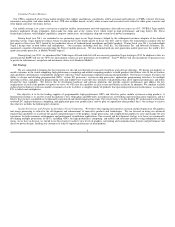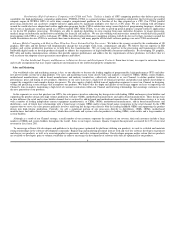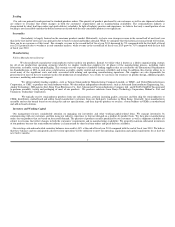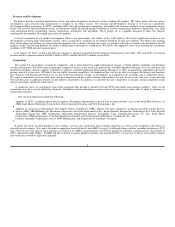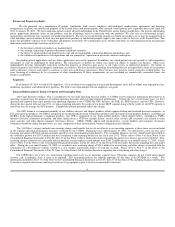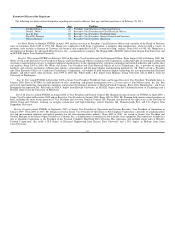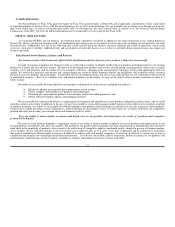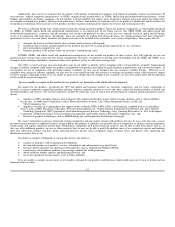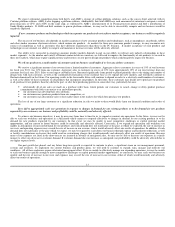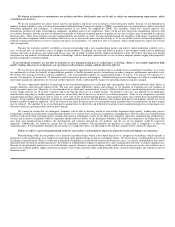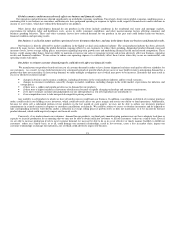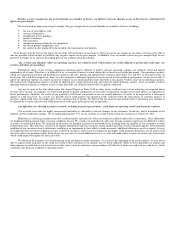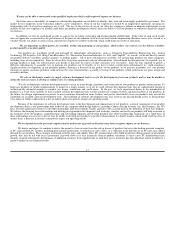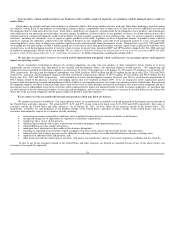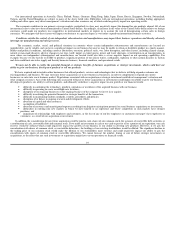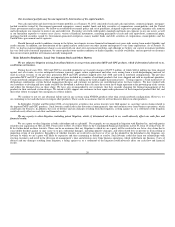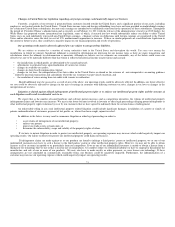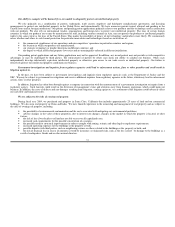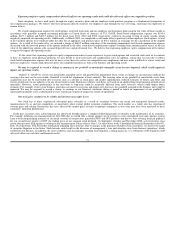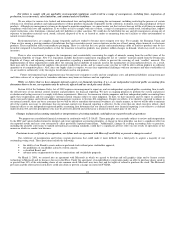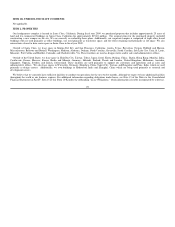NVIDIA 2011 Annual Report Download - page 17
Download and view the complete annual report
Please find page 17 of the 2011 NVIDIA annual report below. You can navigate through the pages in the report by either clicking on the pages listed below, or by using the keyword search tool below to find specific information within the annual report.
Global economic conditions may adversely affect our business and financial results.
Our operations and performance depend significantly on worldwide economic conditions. Uncertainty about current global economic conditions poses a
continuing risk to our business as consumers and businesses have postponed spending in response to tighter credit, negative financial news and/or declines in
income or asset values, which have reduced the demand for our products.
Other factors that could depress demand for our products in the future include conditions in the residential real estate and mortgage markets,
expectations for inflation, labor and healthcare costs, access to credit, consumer confidence, and other macroeconomic factors affecting consumer and
business spending behavior. These and other economic factors have reduced demand for our products in the past and could further harm our business,
financial condition and operating results.
Our business is cyclical in nature and has experienced severe downturns that have, and may in the future harm our business and financial results.
Our business is directly affected by market conditions in the highly cyclical semiconductor industry. The semiconductor industry has been adversely
affected by many factors, including the global downturn, ongoing efforts by our customers to reduce their spending, diminished product demand, increased
inventory levels, lower average selling prices, uncertainty regarding long-term growth rates and underlying financial health and increased competition. These
factors, could, among other things, limit our ability to maintain or increase our sales or recognize revenue and in turn adversely affect our business, operating
results and financial condition. If our actions to reduce our operating expenses to sufficiently offset these factors when they occur are unsuccessful, our
operating results will suffer.
Our failure to estimate customer demand properly could adversely affect our financial results.
We manufacture our products based on forecasts of customer demand in order to have shorter shipment lead times and quicker delivery schedules for
our customers. As a result, we may build inventories for anticipated periods of growth which do not occur or may build inventory anticipating demand for a
product that does not materialize. In forecasting demand, we make multiple assumptions any of which may prove to be incorrect. Situations that may result in
excess or obsolete inventory include:
• changes in business and economic conditions, including downturns in the semiconductor industry and/or overall economy;
• changes in consumer confidence caused by changes in market conditions, including changes in the credit market, expectations for inflation, and
energy prices;
• if there were a sudden and significant decrease in demand for our products;
• if there were a higher incidence of inventory obsolescence because of rapidly changing technology and customer requirements;
• if we fail to estimate customer demand properly for our older products as our newer products are introduced; or
• if our competition were to take unexpected competitive pricing actions.
Any inability to sell products to which we have devoted resources could harm our business. In addition, cancellation or deferral of customer purchase
orders could result in our holding excess inventory, which could adversely affect our gross margin and restrict our ability to fund operations. Additionally,
because we often sell a substantial portion of our products in the last month of each quarter, we may not be able to reduce our inventory purchase
commitments in a timely manner in response to customer cancellations or deferrals. We could be subject to excess or obsolete inventories and be required to
take corresponding inventory write-downs and/or a reduction in average selling prices if growth slows or does not materialize, or if we incorrectly forecast
product demand, which could negatively impact our financial results.
Conversely, if we underestimate our customers’ demand for our products, our third party manufacturing partners may not have adequate lead-time or
capacity to increase production for us meaning that we may not be able to obtain sufficient inventory to fill our customers’ orders on a timely basis. Even if
we are able to increase production levels to meet customer demand, we may not be able to do so in a cost effective or timely manner. Inability to fulfill our
customers’ orders on a timely basis, or at all, could damage our customer relationships, result in lost revenue, cause a loss in market share, impact our
customer relationships or damage our reputation, any of which could adversely impact our business.
15


